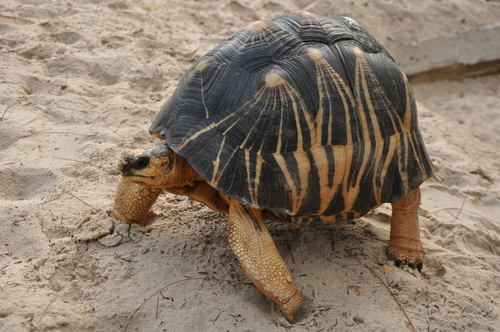
Radiated Tortoise
The Radiated Tortoise, with its striking star-patterned shell, is a vital seed disperser in Madagascar's ecosystems. Endearing and endangered, this herbivore navigates dry forests, showcasing nature's artistry and ecological importance.
30-80 years
Lifespan
2.2 kg
Weight
Length: 30 - 41 cm
Size
Brown, Yellow, Black, Tan, Green
Color
15-20 years
Age of Sexual Maturity
0.3 mph
Top Speed
Critically Endangered
Conservation Status
Decreasing
Population Trend
Characteristics
Astrochelys radiata, known as the Radiated Tortoise, is native to Madagascar's dry forests and scrublands. It features stunning star-like patterns on its high-domed shell, which serve as camouflage. This tortoise is herbivorous, feeding on grasses and fruits, and plays a crucial role in seed dispersal, supporting ecological balance.
Distribution Range of the Radiated Tortoise
The Astrochelys radiata, commonly known as the Radiated Tortoise, is native to the dry spiny forests of southern Madagascar. This region is characterized by its unique flora and fauna, which are adapted to the arid conditions.
Radiated Tortoise's Habitat
Environmental Conditions
The Radiated Tortoise inhabits a semi-arid environment with a climate that ranges from hot and dry to warm and humid, depending on the season. The region experiences distinct wet and dry seasons, with the dry season lasting from May to October and the wet season from November to April.
Ecological Niche
The tortoise is typically found in areas with low, thorny vegetation known as the spiny forest, characterized by species such as the Didiereaceae family and various succulents. It plays a role in seed dispersal and maintaining the ecological balance by grazing on grasses and herbs.
Copyright @ Nature Style Limited. All Rights Reserved.
 English
English